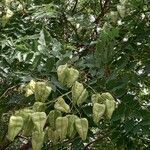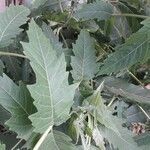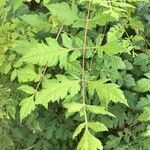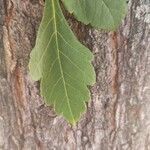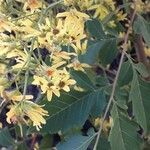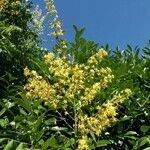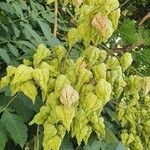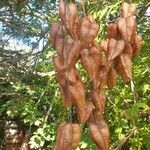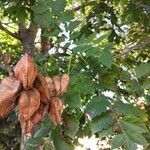Trees or shrubs, deciduous. Bark grayish brown to black, stout, fissured when dry; lenticels gray to dark brown, small; branches tuberculate, appressed pubescent or glabrous with axes and petioles. Leaves fascicled on young branches, spreading, pinnate, imperfectly bipinnate, or sometimes bipinnate, to 50 cm; leaflets (7-)11-18 (terminal one sometimes connate with uppermost pair below middle), sessile or very shortly petiolate, opposite or alternate, ovate or broadly ovate to ovate-lanceolate, (3-)5-10 × 3-6 cm, papery, abaxially barbate on vein axils, sometimes tomentose, or densely pale yellow pubescent, adaxially scattered appressed pubescent on midvein, base obtuse to subtruncate, apex acute or shortly acuminate, margin irregularly obtusely serrate, teeth mucronate at tips, sometimes teeth near base sparse and fissured, or pinnately lobed. Thyrses 25-40 cm, densely pilosulose, branches spreading and long, cymes on last branches 3-6-flowered, densely arranged and capitate; bracts narrowly lanceolate, scabrous-hairy. Flowers pale yellow, slightly fragrant. Pedicels 2.5-5 mm. Sepals ovate, margin glandular ciliate, erose. Petals 4, reflexed when flowering, linear-oblong, 5-9 mm, claw 1-2.5 mm, villous; scale yellow at first, orange when flowering, irregularly fissured, tuberculate, appressed hairy. Stamens 8, 7-9 mm in male flowers, 4-5 mm in female ones; filaments densely spreading white villous at lower half. Disk oblique, with obtuse lobes. Ovary trigonous, glabrous except on ridges; rudimentary ovary densely hispidulous. Capsules conical, 4-6 cm, 3-ridged, apex acuminate; carpels ovoid, abaxially reticulate veined, adaxially smooth and slightly shiny. Seeds subglobose, 6-8 mm in diam. Fl. Jun-Aug, fr. Sep-Oct.
More
A deciduous tree. It grows 9-15 m tall. It spreads to 6-9 m tall. The bark is pale brown and develops shallow cracks. The leaves are long with leaflets along the stalk. The leaves are 45 cm long and it can either be lobed or have leaflets. The leaflets are 10 cm long. They have teeth along the edge. They are red when young. They then turn green then yellow. The flowers are small and yellow. They are 1.2 cm across. They occur in sprays. These can be 45 cm long. They are at the ends of shoots. The fruit are bladder like and papery.
Deciduous trees. Young parts puberulous. Leaves alternate, imparipinnate or bipinnate. Leaflets dentate to divided. Inflorescences large terminal panicles. Flowers unisexual, zygomorphic. Sepals 5, connate at base, slightly unequal. Petals 4, longer than sepals, yellow, reddish at base, turned upwards; scales 2. Disc undulate, lowest or interrupted at the place of the missing petal. Stamens 8, exserted in male flowers. Fruits bladder-like, inflated, loculicidal capsules. Seeds globose, without fleshy structures.
A tree with 7–15 toothed lfls 3–6 cm, fls in panicles 2–4 dm, and inflated, partly 3-locular capsules, occasionally escapes from cult.
